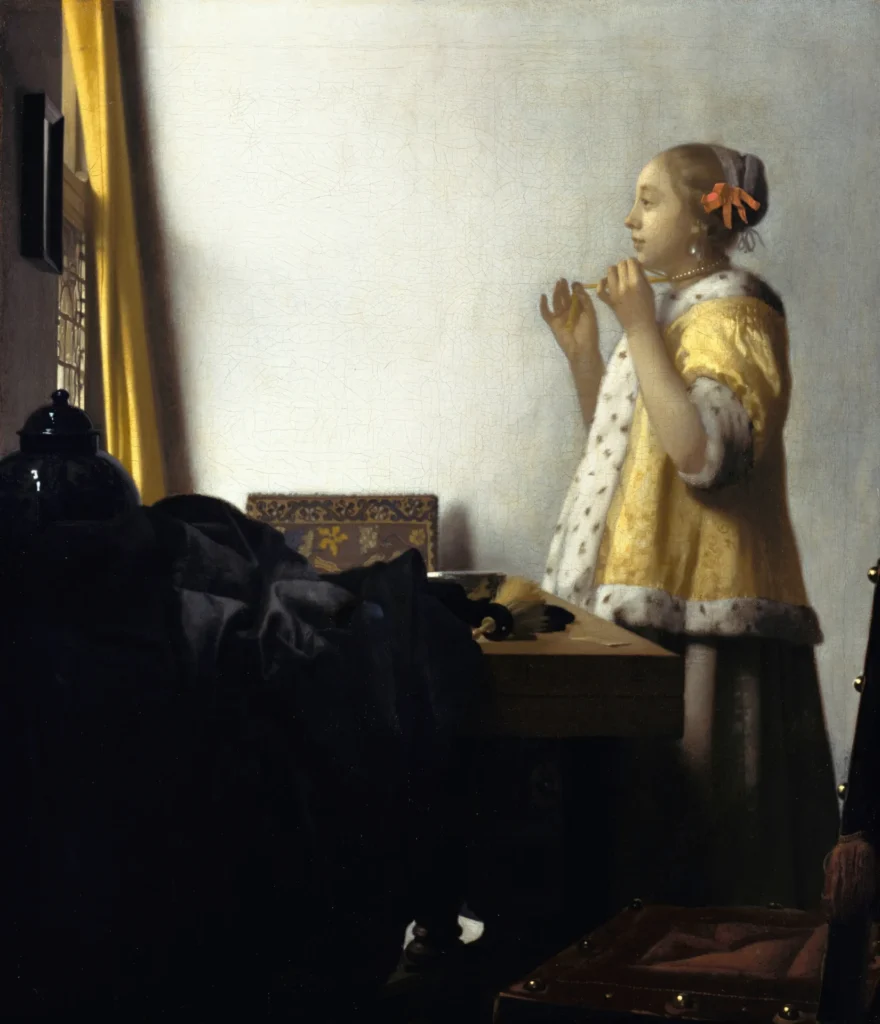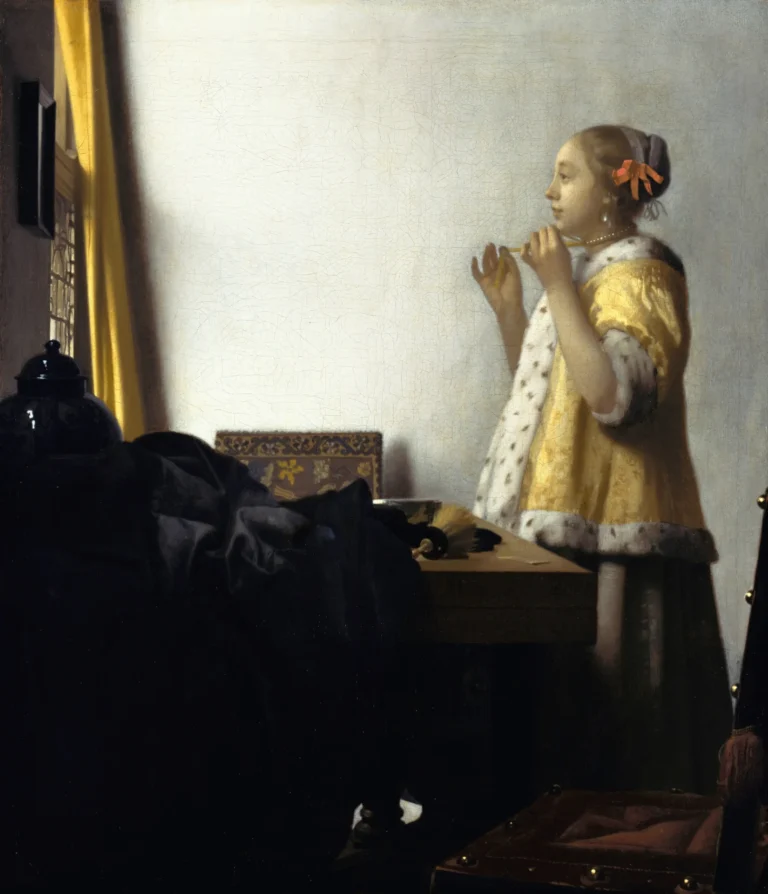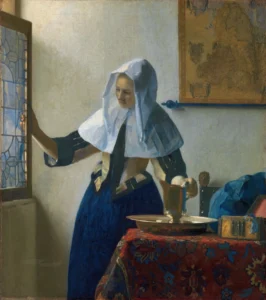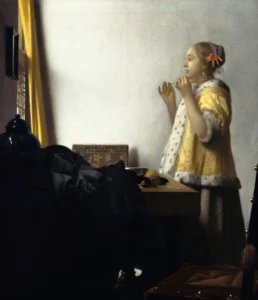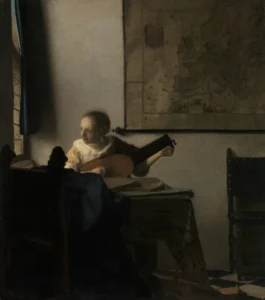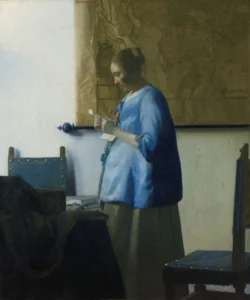Young Woman with a Pearl Necklace (1663-1665)
Johannes Vermeer's Young Woman with a Pearl Necklace is a striking portrayal of a young Dutch woman in a domestic setting, adorned in luxurious attire and opulent pearls. The painting, created between 1663 and 1665, highlights the artist's virtuosity in capturing light and detail, effectively illustrating the quiet moments of 17th-century life. With its fascinating interpretation of beauty and modesty, it remains a quintessential work of the Dutch Golden Age. Its position in the collection of Berlin's Gemäldegalerie underscores its enduring significance.
1663 - 1665
About the Artwork
Did You Know
Liked what you see? Add it to your collection.
Enjoyed reading? Share it.
... continued
Artist and Period
The painting is the work of Johannes Vermeer, a Dutch painter known for his mastery of light and his contributions to the genre of domestic interior scenes.
Composition and Setting
The painting depicts a young Dutch woman, likely from an upper-class background, in a domestic interior setting. She is shown wearing a yellow, fur-trimmed morning coat, which was a common attire for wealthy Dutch women during the winter months. The coat features white fur trimmings, possibly ermine, which was a luxury item at the time.
Details and Symbols
The woman is adorned with pearl earrings and a pearl necklace, symbols that often represent purity, chastity, beauty, or love in art. The pearls depicted are unusually large, suggesting they could only be owned by the wealthiest women in Dutch society.
Facial Expression and Actions
The woman's facial expression is enigmatic; she appears to be either putting on the necklace, taking it off, or simply gazing at her reflection in a black-framed mirror, possibly made of ebony. Her expression is described as blank and somewhat vain, typical of the three-quarter pose common in Dutch Baroque painting.
Domestic Tools and Setting
The painting includes various domestic tools such as a water basin, a comb, and a powder brush on the dressing table, indicating the woman is in the midst of her morning routine. These items were common in 17th-century Dutch paintings depicting women at their toilette.
Lighting and Color
The scene is illuminated by light coming from a window on the left, which is partially covered by a yellow curtain. This curtain, along with the yellow of the woman's jacket and the red ribbon in her hair, creates a striking color contrast within the dimly lit room. The gray walls of the room serve as a backdrop, allowing the viewer to focus on the main subject without distraction.
Geometric Layout and Realism
Vermeer's use of geometric composition and his attention to detail, such as the microscopic brush strokes and thin layers of gray and white paint, contribute to the painting's realism. There is speculation that Vermeer might have used a camera obscura to achieve the precise positioning and effects in his paintings.
Current Location
The painting is part of the collection at the Gemäldegalerie in Berlin, Germany, and is owned by the Staatliche Museen.




